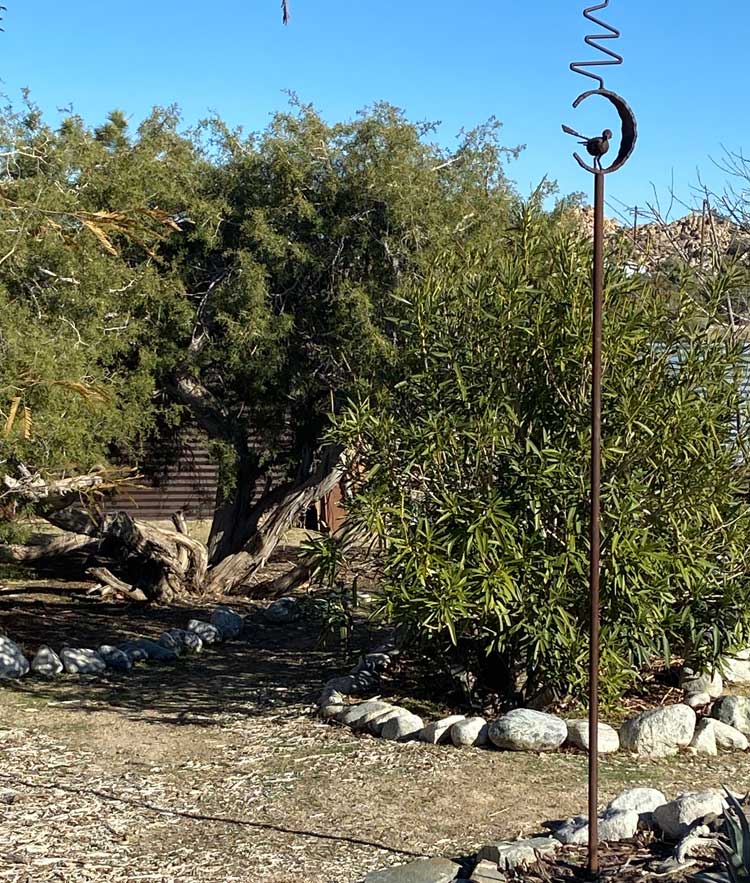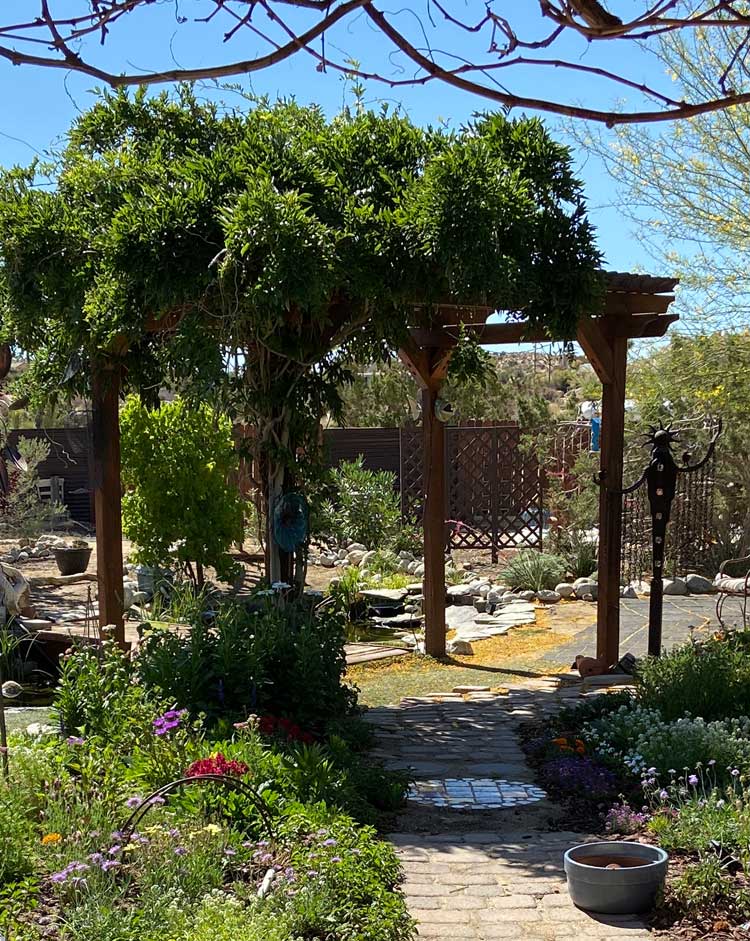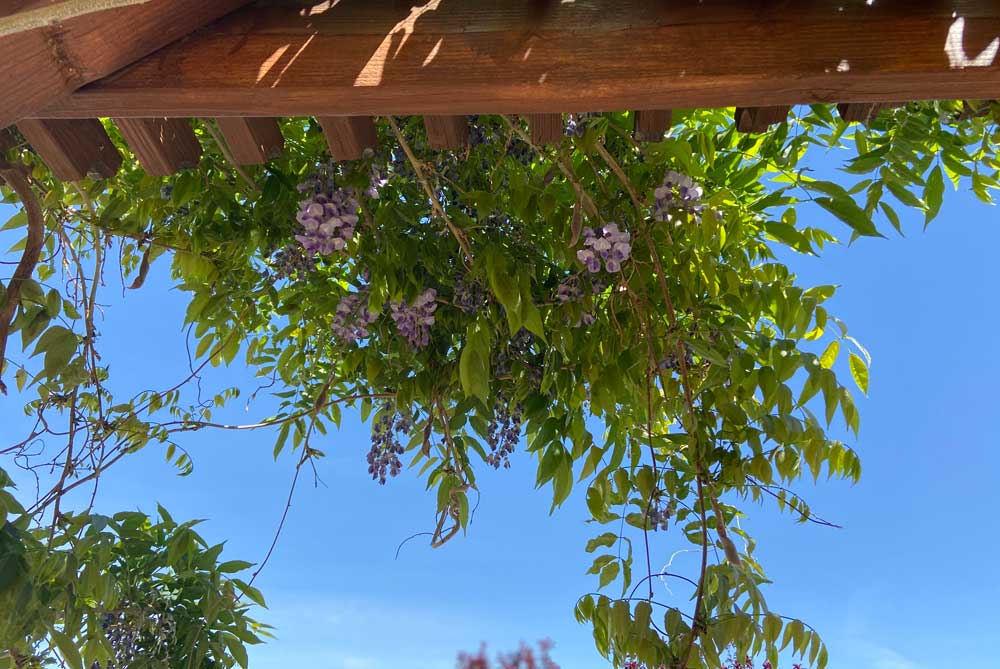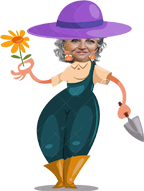Applying Design Principles to Hardscape
If you google the term garden design your search will result in a myriad of rules, principles or laws. How many are there? 5,7,8,10,18 …. It all depends on the expert you choose to consult. Rather overwhelming but what does this all really mean? Well, the goal is to create an aesthetically pleasing and harmonious environment. And using artistic principles are the path to achieve this.
As an artist I have learned that pausing and looking is among my most valuable steps in the creative process. And the same is true in designing a garden space. A lot of these principles make sense when we study our surroundings. You can sense when the scene is unbalanced or some element seems out of place. Whenever you have added something new or are in a quandary about what is next – stop and look. My point here is that you can use these rules as an aid but your eye will usually know what to do.
At this point we will be considering design principles in the context of hardscape as that is the next step in our overall plan. In my experience the following are the most important to keep in mind.
1. Line
Lines are important to control movement through your garden area but they also create flow. You want to be slowly guided through the discovery of your garden, by directing your vision. A pathway can lead your eye to another building or to a design feature like a pond or sculpture, a curve that can’t be seen around until you get there draws you on or a seating area beckons.
In a more informal garden as we would create in the high desert pathways that vary in width and curve are more visually appealing than straight lines. They can be created with hardscape materials such as pavers or stone for the actual path or be bordered leaving the path itself as dirt. Border material can be rock, stone, brick or some other type of edging material. It could also be plants.

How to implement?
If you are following along in the Build It section you have now defined your garden area with fencing, cleared it leaving trees or shrubs that you wish to keep and determined where your main seating area will be located. This will be the point from which your garden is most viewed so start here. Study what is left. The key is to start with what you have and add what you want with the principles of garden design in mind.
Study sight and travel lines that would be enhanced with pathways. Think about the path you would walk from your patio to a shed or outbuilding. Logical pathways will be clear to see but you also want to break up your area into smaller points of interest with a focal point or a destination toward which your eye is drawn.

Create other paths that will define the edges of your beds. This can be done by simply raking the dirt or creating more of a definition with brick, pavers or rock. Do not use mulch to define pathways as that will be your bed covering.
If a bed is a very large area that would be hard to access (and irrigate) think about breaking it into smaller areas with a pathway or create a small pathway within the bed itself perhaps with stepping stones. Making a section a different height and building a small wall with rock will create another line of interest.

2. Form
Form refers to the shape of a plant or hardscape feature. Various heights and shapes add interest to your garden. Now is the time to think about those garden structures that you have longed for – pergolas, arbors, benches, birdbaths, sculpture …. Other ideas are plentiful and are only limited by your imagination. Smaller decorative ideas will be added within your beds – at this point you are studying the big picture.

How to implement?
When considering where pathways are needed think about adding other structures and where would they best be placed to add balance to your area.
Ponds are a wonderful addition to the high desert garden. There is nothing more soothing and cooling than the sound of running water in the desert. They are also expensive to build, stock and maintain. If you are up for this now is the time to decide on a location.
I again was fortunate that there was an existing pond on my property. Although ringed by a nearly impregnable stand of overgrown oleanders, in the center was a circular concrete pond. At the time it was filled with dirt and debris, cracked and derelict – what a score! And another huge project!
As the pond was circular it would need a bridge across – and the entrance to the bridge was a perfect place to add a pergola.
3. Color
Color is a key element in landscape design even in your hardscape choices. The most dominant color in your hardscape will be the color of your house and outbuildings. When choosing material and stain colors complimenting your house is important.
Hardscape color will be the backdrop to future plants. Consistent and complimentary color among hardscape elements is important for a cohesive look. If your fencing is stained the same stain color should be applied to other wood structures.
My personal preference is to warm up the harsh sun bleached colors of the desert by using organic color for hardscape elements – brown stain for wood and brick for patios and walkways.
Mistakes I have made – and they are many
When I was in the early stages of creating my garden space I had the help of an ex-marine for whom no job was too over the top. Not only did he provide the muscle he loved to add his own bits of design. Nearby was an unlimited supply of white rock. He took it upon himself to haul truckloads of this rock to my property. Not only did this rock become part of the “mount vesuvius” waterfall he built but I bordered every bed with it. And hated it! The color was all wrong for my desired look.

4. Scale
The size of hardscape additions should be in proportion to existing structures – i.e. size matters.
How to implement?
Nothing is as disappointing as adding a pergola or other major structure only to realize that it is dwarfed by surrounding buildings. Our eye tends to think too small – when in doubt go big.
5. Harmony
As the term implies, harmony or unity is when the parts of the garden work together as a whole. Repetition of colors and structures brings the whole together. Decide what your style is and don’t stray too far or build too many large structures dissimilar in look. A shed built with a wild west front will not blend well with a contemporary sculpture.


0 Comments